 Did you know studies have shown that the average adult gains 0.88 to 1.98 pounds during the holiday season, starting the last week of November and through the first or second week of January? For many, this doesn’t come as a surprise, especially as we tend to become more sedentary due to the weather changes and often experience an increase in temptation due to frequent holiday gatherings that focus on food, limited edition “holiday” menu items, and more. This holiday season, set yourself up for success by following these dieting “dos” and “donts” during the month of December.
Did you know studies have shown that the average adult gains 0.88 to 1.98 pounds during the holiday season, starting the last week of November and through the first or second week of January? For many, this doesn’t come as a surprise, especially as we tend to become more sedentary due to the weather changes and often experience an increase in temptation due to frequent holiday gatherings that focus on food, limited edition “holiday” menu items, and more. This holiday season, set yourself up for success by following these dieting “dos” and “donts” during the month of December.
DON’T: Expect your diet to be perfect during the holidays.
DO: Plan and prepare for temptation and offsets.
Let’s be realistic. There are very few, if any, people who have a perfect diet, let alone during the holidays. The holidays are a time of celebration, with food and alcohol often taking center stage at these events. It’s important to expect and prepare for temptation and to have a plan of action for practicing moderation throughout the month. Check out these 10 Simple Ways to Stay Healthy While Celebrating the Holidays for guidance on doing so.
DON’T: Skip meals to make room for your holiday meal (or alcohol).
DO: Eat a balanced diet, no matter the day, and practice portion control.
Many people attempt to skip meals to “save up” calories for heavier meals, desserts, and alcohol; however, this approach often leads to binge eating. Instead of cutting out certain foods or practically starving yourself to make up for a big meal, stick to your normal healthy eating habits or regimen and practice moderation and portion control when consuming foods rich in calories, saturated fat, sodium and sugar.
DON’T: Overdo it with the high-calorie, high-sugar “seasonal” beverages.
DO: Opt for a smaller size or customize your drink to make it healthier for you.
Did you know a grande (16 oz) Peppermint Mocha from Starbucks® contains 440 calories, 54 grams of sugar, and 16 grams of fat? Practice moderation by ordering a tall (8 oz) with only 240 calories, 28 grams of sugar, and 10 grams of fat. Or, try customizing your drink to make it healthier by asking that your drink be made with nonfat or plant-based milk, fewer pumps of sweetener/syrup, or without toppings (such as whipped cream or chocolate shavings), all of which can save up to hundreds of extra calories!
DON’T: Skip out on exercise because it’s cold or snowy.
DO: Opt for indoor exercise!
Don’t have a gym membership? Try a free online exercise video (there are TONS on YouTube) or head to a large indoor space that allows for 10 to 15 minutes of walking, such as a mall or large department store.
DON’T: Give up after one bad day.
DO: Wake up the next day, forgive yourself, and start over.
One bad day doesn’t undo all of the progress you’ve made and won’t prevent you from having success in the future. After a poor day (or two) of eating, don’t give up or put off your goals until the next week. Instead, wake up the next day, show yourself some forgiveness, and make a plan for getting back on track.
This blog was written by Lindsey Recker, MS, RD, NIFS Registered Dietitian. To learn more about the NIFS bloggers, click here.


 It’s safe to say that 2020 has been one a heck of a year (and it’s barely half over!)—the good, the bad, the ugly. At times, it’s felt as if an entire decade has passed. No matter how you slice it, the fact that we’ve experienced something as novel as a global pandemic still feels weird to say, think about, and sometimes fully appreciate. It has been a tumultuous time outside of COVID-19 as well, and every person has had a unique experience, a unique perception, and unique challenges along the way.
It’s safe to say that 2020 has been one a heck of a year (and it’s barely half over!)—the good, the bad, the ugly. At times, it’s felt as if an entire decade has passed. No matter how you slice it, the fact that we’ve experienced something as novel as a global pandemic still feels weird to say, think about, and sometimes fully appreciate. It has been a tumultuous time outside of COVID-19 as well, and every person has had a unique experience, a unique perception, and unique challenges along the way. 
 Daily, life provides countless learning opportunities that, if processed properly, can make us strong individuals capable of accomplishing extraordinary things. Some lessons stem from positive experiences in our lives, but I think the strongest lessons are derived from strife, hardship, and even failure. These lessons can hurt, and you can either live in the pain or learn from it. We are currently living a life full of learning opportunities that have and will continue to test our ability to grow.
Daily, life provides countless learning opportunities that, if processed properly, can make us strong individuals capable of accomplishing extraordinary things. Some lessons stem from positive experiences in our lives, but I think the strongest lessons are derived from strife, hardship, and even failure. These lessons can hurt, and you can either live in the pain or learn from it. We are currently living a life full of learning opportunities that have and will continue to test our ability to grow.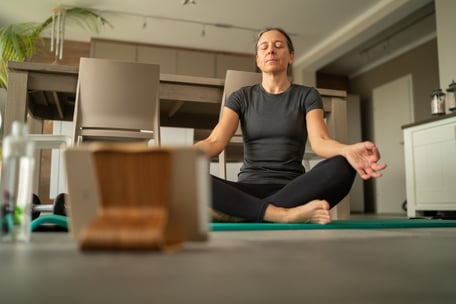 Take these next few weeks or so and use them to your advantage. We know this is an extremely challenging time, and we want to make sure you feel like you are taken care of. Circumstances are tricky right now, so even if you adopt one new technique, consider that a win! Don’t expect yourself to “eat the rainbow” every day, feel like you fall asleep easily at night from a relaxing day working at home in your pajamas, or get in a 10-mile run each morning. While you shelter at home and stay healthy, keep these tips in mind.
Take these next few weeks or so and use them to your advantage. We know this is an extremely challenging time, and we want to make sure you feel like you are taken care of. Circumstances are tricky right now, so even if you adopt one new technique, consider that a win! Don’t expect yourself to “eat the rainbow” every day, feel like you fall asleep easily at night from a relaxing day working at home in your pajamas, or get in a 10-mile run each morning. While you shelter at home and stay healthy, keep these tips in mind.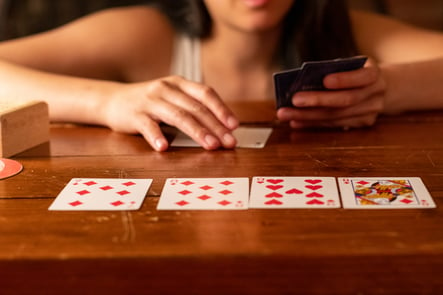 It goes without saying; we’re living through some pretty odd times. With the onset of COVID-19, many of our lives have been flipped on their heads. For some, there has been less structure, and maybe a little more downtime, and that has the potential to make even the sanest of them all go a little stir-crazy.
It goes without saying; we’re living through some pretty odd times. With the onset of COVID-19, many of our lives have been flipped on their heads. For some, there has been less structure, and maybe a little more downtime, and that has the potential to make even the sanest of them all go a little stir-crazy. 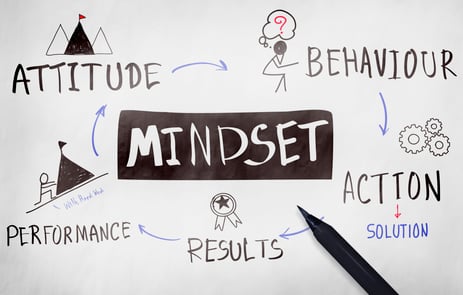 During these unprecedented times of self- and mandated quarantines and stay-at-home orders, it can be easy to slip into a negative mindset accompanied by fear of the unknown and worry about how you are going to get through this. Self-quarantine does not have to be void of self-improvement. Social media is drenched with ideas and strategies to keep up your physical fitness at home with a million bodyweight workouts and DIY fitness equipment ideas. I’m partial to the elite content that the NIFS pros are providing daily, obviously, but there is no shortage of methods out there to keep moving at home. But what about emotional and mental fitness, and how to continue the work on YOU that makes us strong individuals inside and out?
During these unprecedented times of self- and mandated quarantines and stay-at-home orders, it can be easy to slip into a negative mindset accompanied by fear of the unknown and worry about how you are going to get through this. Self-quarantine does not have to be void of self-improvement. Social media is drenched with ideas and strategies to keep up your physical fitness at home with a million bodyweight workouts and DIY fitness equipment ideas. I’m partial to the elite content that the NIFS pros are providing daily, obviously, but there is no shortage of methods out there to keep moving at home. But what about emotional and mental fitness, and how to continue the work on YOU that makes us strong individuals inside and out? The Rules of Being in the Flow
The Rules of Being in the Flow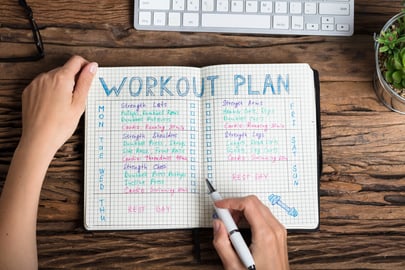 1. Have a plan, and don’t cheat.
1. Have a plan, and don’t cheat.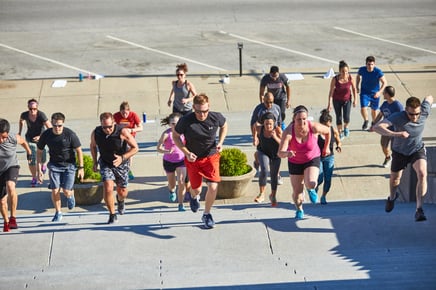 You either love them or you hate them… group workouts! In a world where technology is seemingly taking over the human connection and interaction, working out with a group can offer the opportunity to meet real friends instead of virtual ones online.
You either love them or you hate them… group workouts! In a world where technology is seemingly taking over the human connection and interaction, working out with a group can offer the opportunity to meet real friends instead of virtual ones online.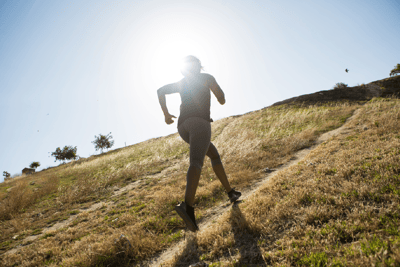 Fitness is a great tool to use to train the mind. Yes, often people work out for physical health, but exercise is also getting a lot of
Fitness is a great tool to use to train the mind. Yes, often people work out for physical health, but exercise is also getting a lot of  There are many diet personalities out there. If you are one of these, it could be the reason you are having trouble losing weight or maintaining weight loss.
There are many diet personalities out there. If you are one of these, it could be the reason you are having trouble losing weight or maintaining weight loss.